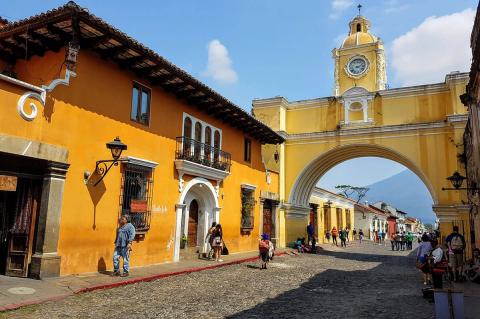Antigua Guatemala: Preserving Colonial Majesty Amidst Nature's Trials
Nestled in the southern reaches of the Central Highlands of Guatemala, Antigua Guatemala, affectionately known as "Antigua" or "La Antigua," stands as a timeless testament to the grandeur of colonial architecture and the resilience of its inhabitants in the face of natural calamities. Enveloped in a landscape of rolling hills and volcanic peaks, this historic city beckons visitors with its rich cultural heritage, vibrant streets, and magnificent architecture.

